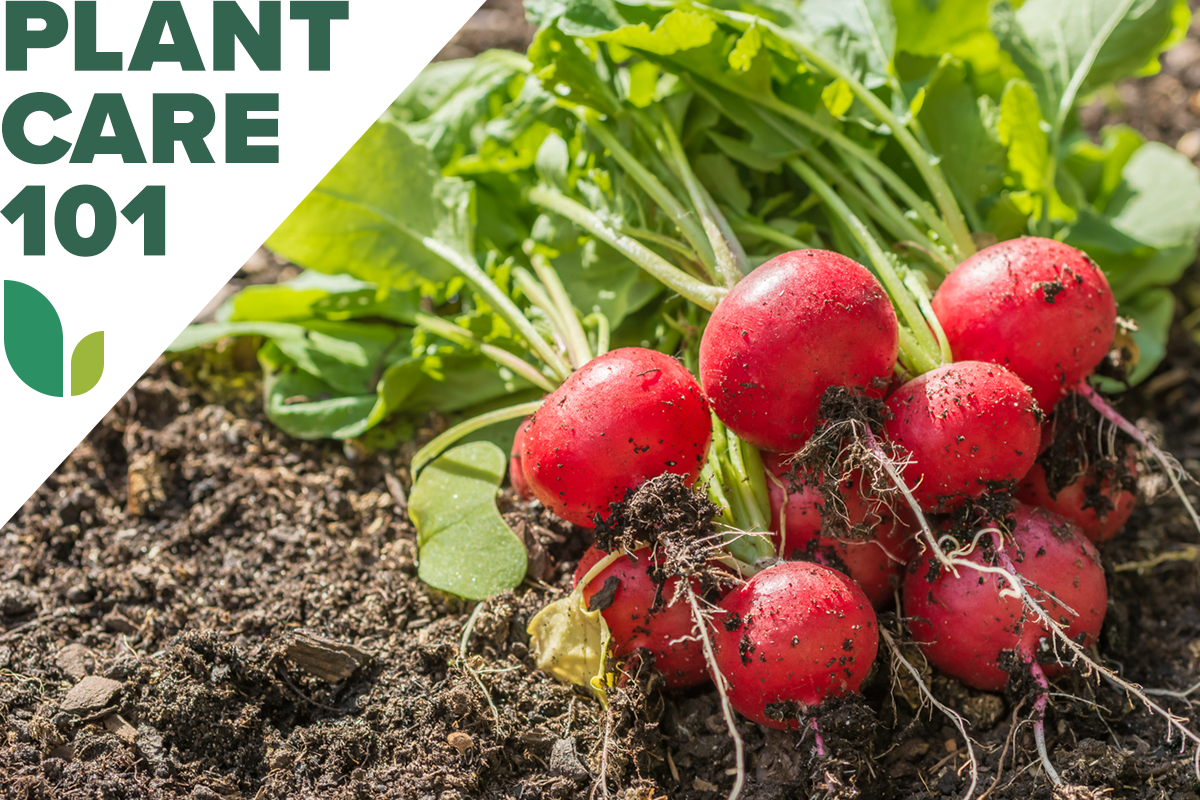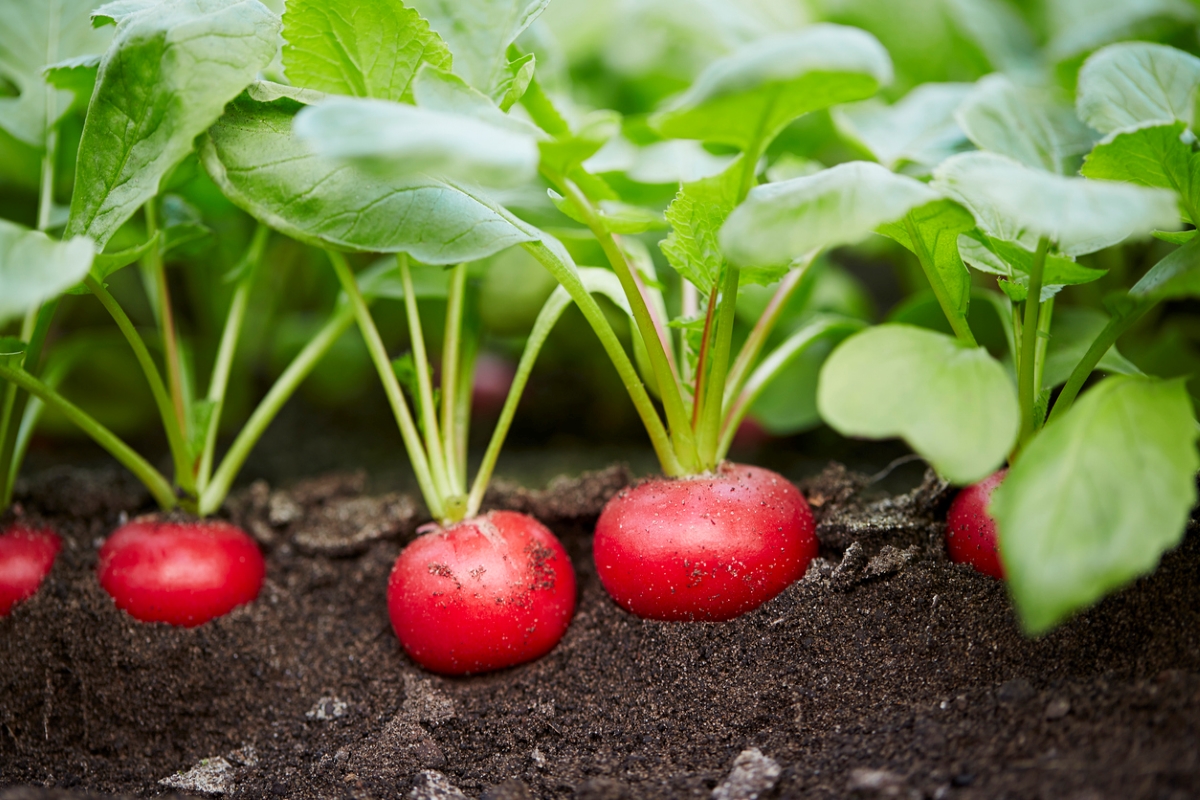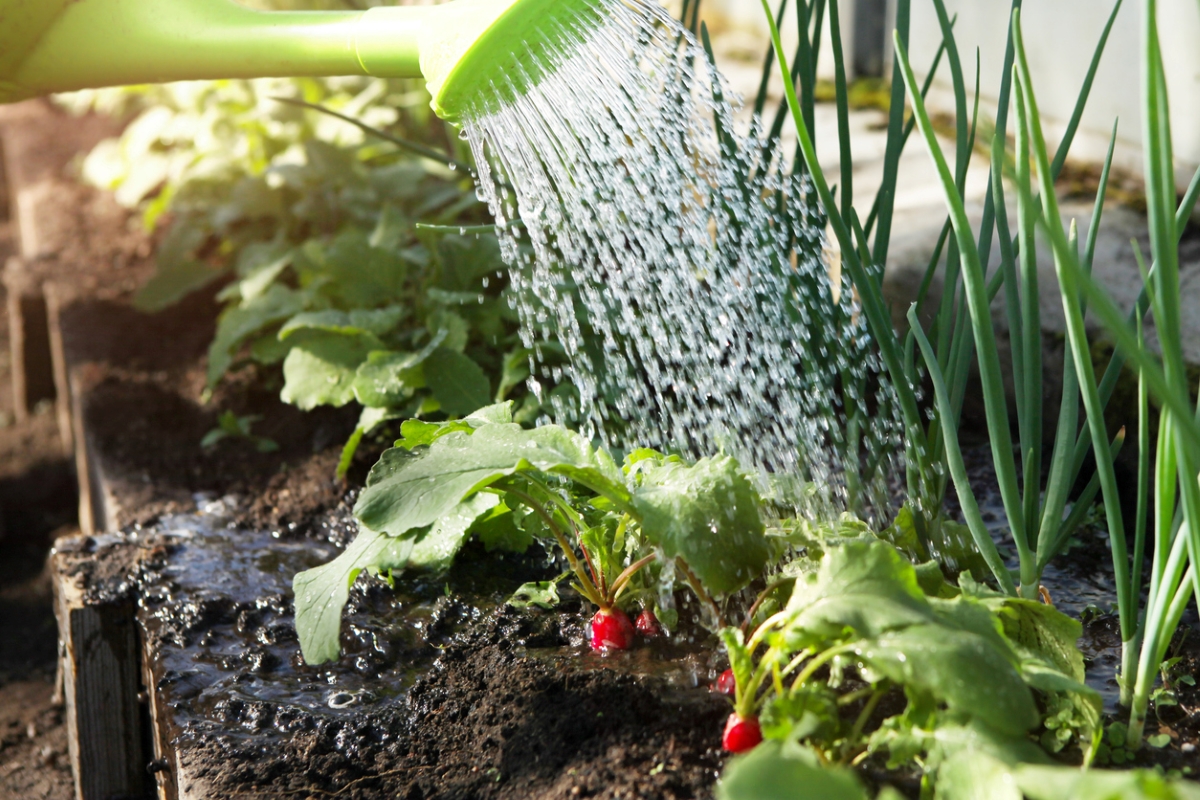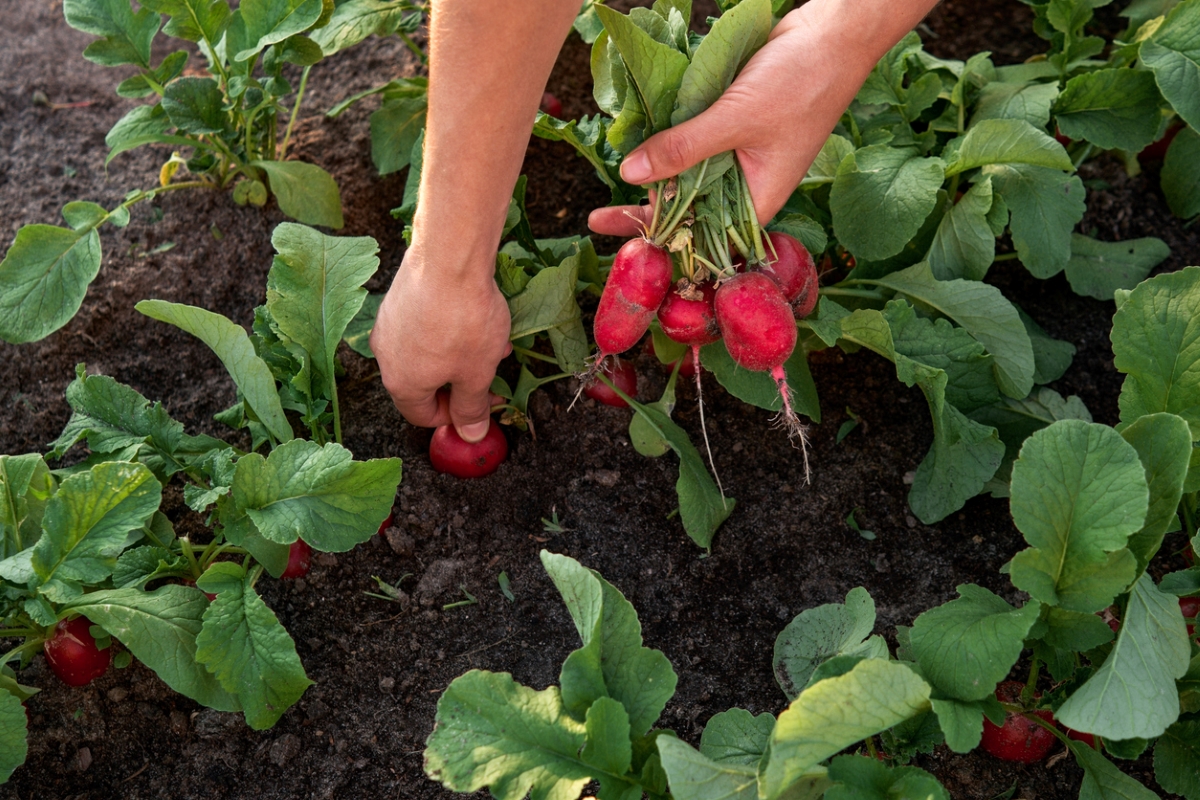

We may earn revenue from the products available on this page and participate in affiliate programs. Learn More ›
Spring, winter, or daikon radishes are some of the easiest crops to grow in both vegetable gardens and containers; they even can be slipped in between rows of other veggies to fill an empty garden space and keep beds productive. Beyond being an excellent companion plant for cucumbers and other common crops, radishes are typically pest-free, and they’re one of the few vegetables that tolerate partial shade. But while growing radishes has lots of perks, most gardeners want to learn how to grow radishes to spruce up salads, slaws, and homemade pickles with their unique zingy heat and top-notch crunch.
If you’re craving radishes or just want to try raising a beginner-friendly easy crop to grow, this guide will teach you what you need to know to get radishes to grow.
Growing Radishes at a Glance
Common Name: Radish
Scientific Name: Raphanus raphanistrum subsp. sativus
Hardiness Zone: 2 to 11, grown as an annual
Soil: Fertile, loose, and well draining
Light: Full sun to partial shade
Water: Medium
Food: Organic, low-nitrogen fertilizer and compost
Propagation: Seed
Safety: All parts edible
Radish Characteristics
Radishes are cold-tolerant crops that typically grow as annuals in vegetable gardens, although some radishes are biennials (last for two growing seasons). A type of brassica vegetable, the radish is closely related to plants like turnips, mustard greens, and broccoli, and they likely originated in China. The popular vegetable can be found in gardens throughout the globe today.
All parts of the radish plant are edible, including the leafy greens; however, radishes are typically grown for their crunchy and slightly spicy roots, which come in various shapes and colors. Most spring radishes are small and globe-shaped with skins in brilliant shades of red, pink, and purple. But growers also can experiment with tapering daikon radishes and thicker-skinned winter radishes, which are ideal for winter storage in root cellars.

Recommended Radish Varieties
- French Breakfast: An heirloom spring radish with elongated, red and white roots that are harvested 25 to 30 days after sowing.
- Easter Egg: With brilliant roots in shades of pink, purple, and white, Easter Egg is an easy-to-keep spring radish that’s ready to harvest in under 30 days.
- Shunkyo Semi-Long Daikon: There are many daikon varieties from which to choose, but most have tapering, red or white roots that typically grow up to 14 inches long. This 5-inch variety matures in about 32 days.
- Round Black Spanish: A variety of winter storage radish, this one is prized for its spicy roots with creamy white centers and deep, dark skins. It takes longer to mature, about 60 to 70 days.
- Watermelon: Just like a watermelon, this slow-growing winter radish has a vivid pink center and bright green skin. The heirloom variety typically is ready to harvest in 50 to 70 days.
Planting Radishes
Spring radishes are fast growers that sprout readily from seed. Unlike most garden crops, they can be harvested in a matter of a few weeks—just 20 to 30 days after sowing. However, winter radishes and daikons take a bit longer to grow. Use these tips on growing radishes from seed to give your radish crops an advantage this growing season.
When is the best time to plant radishes?
Spring radishes are cold-hardy plants that grow best in spring and autumn gardens when temperatures are between 40 and 70 degrees Fahrenheit. Winter radishes, however, prefer to grow in autumn when temperatures are cool.
For best results, sow radish seeds as soon as the soil is workable in spring and continue succession sowing spring radish seeds every 7 to 10 days until temperatures rise above 65 degrees Fahrenheit. Because radishes bolt quickly in hot weather, it’s best to avoid growing radishes during summer, but many spring or winter radish seeds can be sowed again in late summer to early fall for a late autumn crop of radishes.

Where can radishes grow?
Radishes grow best in full sun, although they are among vegetables that tolerate partial shade in hot areas. Grow radishes in rich, well-draining, soil that is sandy to loamy and with a neutral pH (6 to 7). The soil should be relatively loose to avoid compacting around plant roots.
How do you plant radishes?
To give radish vegetable plants a boost, work compost into the top 6 inches of soil (and loosen the soil) before planting and consider growing radish companion plants like marigolds, peas, and chervil nearby.
- Sow radish seeds ½ inch deep and 1 to 2 inches apart in rows spaced about 10 to 12 inches from each other.
- Water the soil regularly and pull weeds as soon as you see them. Radish seeds should sprout in about 5 to 10 days.
- Once radish seedlings are about 2 inches tall, thin out the seedlings so they’re 3 inches apart.
- Continue watering regularly to keep the soil evenly moist.
- Harvest radish plants when their roots are well formed and appropriately sized for the types of radishes you’re growing.
Can you grow radishes in containers?
Yes, radishes can grow in containers as long as those containers drain well and are deep enough. Shorter varieties will do best, and should have at least 5 inches of soil depth to accommodate developing radish roots. Daikons and other radishes with long, tapering roots need even deeper pots to grow.
Watering Radishes

Radishes can become woody, pithy, and bolt prematurely in dry soil, so it’s important to water radishes regularly to keep the well-draining soil consistently moist. Watering radishes with about 1 inch of water per week should do the trick, but plants will be even happier with a bit of mulch (to retain moisture) and drip irrigation (so that water will not drain through soil as quickly).
Fertilizing Radish Plants
Radishes are light feeders, but they’ll grow better if you enrich the soil with compost or a balanced, slow-release, organic fertilizer prior to planting. After the initial application of fertilizer, there is no need to fertilize radishes again before harvesting. Avoid fertilizer/weed killer combination products and fresh manure.
Safety Considerations
Radishes are completely edible plants—roots, leaves, and all. However, after radishes bolt or flower, their roots become pithy and unpleasant to eat, but their seed pods and flowers can still be harvested and used as salad toppers and garnishes. They are not toxic to dogs or cats, but can cause gas if pets eat too much.
Potential Pests and Diseases
Most pests avoid radish plants, although radishes can still struggle with flea beetles and root maggots from time to time. Crop rotation and companion planting with certain vegetables, flowers, and strongly scented herbs can keep these pests under control.
Harvesting Radishes

Spring radishes are ready to harvest before most other veggies start producing. Succession planting radish seeds can extend the harvesting window by weeks or even months, especially if both winter and spring varieties are sown.
When is the best time to harvest radishes?
Because different radish varieties grow at different rates, always check a variety’s seed packet for information about “days to harvest” for the specific radish. In general, radishes are ready to pick when their roots reach the mature size for the specific radish variety, the radish root tops or “shoulders” begin to press against the soil’s surface, and the radish leaves are 6 to 8 inches high.
How do you harvest radishes?
Harvesting radishes isn’t difficult and most radishes can be pulled by hand. However, to avoid breakage, you might want to use a shovel or hand trowel to gently loosen the soil around daikons and other long, tapering radish roots before hand-pulling.
- Once radishes reach their mature size, grasp the radish leaves at the base and pull them up with a gentle, twisting motion.
- Immediately clip away the radish greens and use them as you would use spinach or kale.
- Cut off the thin, thread-like root from the bottom of spring radishes and give the radish globes a quick rinse to remove dirt.
- Winter radish roots that will be kept in root cellars should not be washed before storage, but their leaves should still be trimmed away.
- If you’d like to collect the seeds of radish plants for next year’s garden, allow the plants to bolt and gather the seeds when the seed pods turn brown and dry on the plant.
How do you store radishes?
Trimmed and cleaned radish roots can be stored in the fridge in plastic containers or bags for about 1 to 2 weeks, while radish greens will stay fresh for about 3 days. For long-term storage, radishes can be pickled and canned with water bath canning, or thick-skinned winter radishes can be packed in damp sand and stored in a root cellar for about 2 to 3 months.
Looking for more beginner-friendly plants? Check out our guides on growing green beans, spinach, and kale.
